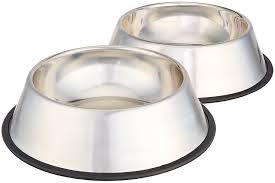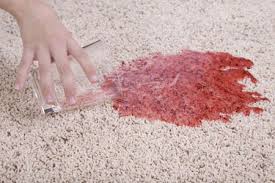Moving into a new home or apartment can be exciting and also somewhat stressful especially for the unprepared. However, one simple way to ease the transition is to begin by moving boxes and furnishings into a sparkling clean home that’s ready to live in while unpacking. Even a new construction home may need cleaning due to left-over construction debris and dust. Here is how to properly clean a home to streamline moving into a new home.
Begin by Cleaning the Bathroom

Utilized multiple times daily to handle some of our most unsanitary hygenic deeds and needs, the bathroom is the prime spot for cleaning duties.
After all, even while unloading the moving truck, this room will likely be the first needed. Even though the home was made to look presentable by previous owners or right after construction if the home is new, there’s no guarantee that it has been thoroughly cleaned and disinfected.
Clean by sanitizing the area thoroughly. Take time to clean behind the toilet, under the rim of the toilet and within any cabinetry or shelving. Don’t forget to scourge the shower and tub. Take time to reseal the grout or to re-caulk surrounds and faucets if necessary. Don’t forget to clean the lighting fixture and air intake vent if one is present.
Get the Kitchen Prepped Before Moving Into a New Home
The next room likely to be needed will be the kitchen, so it should be next on the rooms to be cleaned before moving into a new home. Not only does moving build up hunger and thirst, but if the move is nearby the old home, there will likely be food that needs to be refrigerated or frozen to put away.

Before moving into a new home, be sure to completely clean the inside of the refrigerator and the stove. Many stoves come with self-cleaning modes, but this is a long process that can smoke up the house. If possible do this before moving day. Pull the stove and refrigerator away from the wall and sweep beneath them if possible.
Take time to clean the pantry and cabinet shelves and scrub the exteriors to remove any old residue that has accumulated. Those who desire shelf paper or liners should put it down now before unpacking the kitchen. If there is a dishwasher, perform a self-cleaning cycle using a decalcifier so it’s ready for the first load of dishes. Sanitize handles of faucets, doors, cabinets, etc., as these are often missed by sellers during cleanings.
Getting the Rest of the Home in Order
Concerning cleaning the remaining rooms of the home, we recommend hitting up the bedrooms next followed by the living and dining room areas. In each room, start top to bottom paying close attention to light fixtures, windows, doors, walls and floors. Fully disassemble light fixtures and clean any globes or bulb covers thoroughly in addition to their housing units.
Take a damp cloth and run it across the walls to see if they need cleaning, as many people never think about washing walls. If this process needs to be tackled, be sure to use a cleaner appropriate for the surface. Don’t forget to get into the grooves of the crown molding and floor trim while paying extra attention to corners.
Washing windows may seem mundane, but they are what allows us to enjoy the views of Mother Nature while allowing natural light to grace interior spaces. It’s a good idea to remove any screens and hose them down. While they dry, go ahead and shine up those exterior window panes. Don’t neglect doorknobs, as they are one of the biggest harborers of germs and residue that can cause illness. Now, let’s talk about those floors
Finishing Up With Spotless Floors
Take time to clean flooring and carpets properly. It’s best to handle certain flooring types such as carpeting in advance if the opportunity exists. Deep cleaning carpets is time consuming. There is also the consideration of drying time. However, the remarkable results make it well worth the effort. This may actually be a task worth hiring a professional for, especially if the move is from afar. It gets more challenging to clean carpets after furnishings have been placed.
Generally, sweeping, mopping or steam cleaning tile, ceramic, wood or laminate flooring will suffice, but it should be the last task after the move is complete. This is an ideal time to also make note of any repairs that may be needed, as this is likely the closest inspection you’ll get of the floor for a while.
Now, you can move into your new home or apartment with the satisfaction knowing that it is now spotless and clean!
Guest post by Preston Guyton REALTOR
Broker in Charge/Managing Partner, CRG Companies, Inc.
7717 N. Kings Hwy, Myrtle Beach, SC 29572
Construction, Real Estate and Green.
http://www.crgcompaniesinc.com






 with rubbing alcohol to extract those remains. Avoid the use of hydrogen peroxide, iodine or an iodine-containing cleanser, which can be irritating to tissue already injured. As mentioned earlier, see a doctor if there is any debris you cannot remove. Do not poke tweezers deep into a wound (beyond the first layer of skin)!
with rubbing alcohol to extract those remains. Avoid the use of hydrogen peroxide, iodine or an iodine-containing cleanser, which can be irritating to tissue already injured. As mentioned earlier, see a doctor if there is any debris you cannot remove. Do not poke tweezers deep into a wound (beyond the first layer of skin)!

 without wearing them out. Maintaining clean Birkenstocks is challenging because a shoe of its kind is made of lesser used natural materials, such as recycled cork and untreated leather. There is a straightforward way to clean Birkenstocks without damaging them: the company produces their own cleaning solutions. Shield the cork footbed from the elements and prevent dried-out edges from manifesting by using
without wearing them out. Maintaining clean Birkenstocks is challenging because a shoe of its kind is made of lesser used natural materials, such as recycled cork and untreated leather. There is a straightforward way to clean Birkenstocks without damaging them: the company produces their own cleaning solutions. Shield the cork footbed from the elements and prevent dried-out edges from manifesting by using 
 water and dirt. Birkenstock defines regularly as being on each day that you wear your sandals.
water and dirt. Birkenstock defines regularly as being on each day that you wear your sandals. sneaker that is normally hidden when you are wearing it, such as the area underneath its laces or the outer edges of its tongue. This is to test whether the soap alters the colour of your sneakers: if it does not at first, it is a good sign, but it is important to give it an hour or so before you start a complete clean, just in case a colour change does not immediately appear. For extra unclean Converse, maximize the effectiveness of your cleaning by removing the laces from both shoes. Follow these instructions to clean Converse of canvas, leather, and suede varieties, drawn from the Converse company website:
sneaker that is normally hidden when you are wearing it, such as the area underneath its laces or the outer edges of its tongue. This is to test whether the soap alters the colour of your sneakers: if it does not at first, it is a good sign, but it is important to give it an hour or so before you start a complete clean, just in case a colour change does not immediately appear. For extra unclean Converse, maximize the effectiveness of your cleaning by removing the laces from both shoes. Follow these instructions to clean Converse of canvas, leather, and suede varieties, drawn from the Converse company website:
